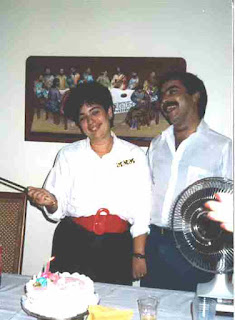"Although inspired in part by a true incident, the following story does depict actual persons or events."
For centuries, champagne has been the preferred choice for celebrating life’s finest moments. Madame de Pompadour ordered it by the gallon for her parties: 1800 bottles were consumed during one masked ball at the Hotel de Ville in 1739.
Benedictine monks around Carcassone started producing sparkling wine in the early 1500’s. From there the process for creating sparkling wine evolved for several centuries. Monk Dom Perignon, who was originally charged with finding a solution for troublesome bubbly wine that resulted in many exploded bottles each spring.
On this occasion of the end of the year, I absolutely have to raise a glass and toast to those condescending inglorious individuals who find it necessary to show their superior command of everything: e.g. bubbly pouring and picture hanging. After many a verbal flogging, I thought I should share these instructions so that others do not fall prey to the same kind of tyranny; a lesson in let it go.
HOW TO OPEN CHAMPAGNE
First, dry the bottle and remove the foil from the wire cage, keeping cork pointed away from people, pets, food and valuable objects. Undo the wire cage encasing cork and hold the cork (a towel may be used here) with one hand, while slowly turning the bottle with the other until the cork begins to free up. The cork should not pop loudly, but sigh quietly—and happily.
HOW TO SERVE CHAMPAGNE
To reduce the exposed surface area, sparkling wines are usually served in glasses with a narrow opening, such as flutes or tulips. These shapes help to conserve the bubbles. Although usually served alone when celebrating or toasting, sparkling wines combine well with different juices and flavors and are a key ingredient in many cocktails.
TO POUR
Wrap the neck of the bottle with a clean towel or napkin (not paper). Hold the base in one hand, with your thumb in the punt (the concave bottom) and fingers spread out along the barrel of the bottle. Use your other hand to support the neck. Prime the glass by pouring a bit on the inside wall of the glass, wait for the mousse to temper and then pour more. Little bubbles should come to the surface. This indicates that there is nothing wrong with the wine and that the glass has no contaminates on it. It also prevents frothing over. Pour glasses to about two-thirds full. If pouring for several people, pour an inch or so into each glass, and then go around again.
Hanging pictures on walls:
I confess, it took me a few weeks to recover from the conversation that implied I did not know how to hang... I found the ability to let it go.
I will add that there is an exacting practice as to how to hang art on walls! Rule of thumb '5 feet 4 inches' to the middle of the painting which is equivalent to Ana (me) height....perfect. I like that about me; perfect arm extension for hanging simple pieces.
On a final note, a toast to us! Let it go!




















































































































